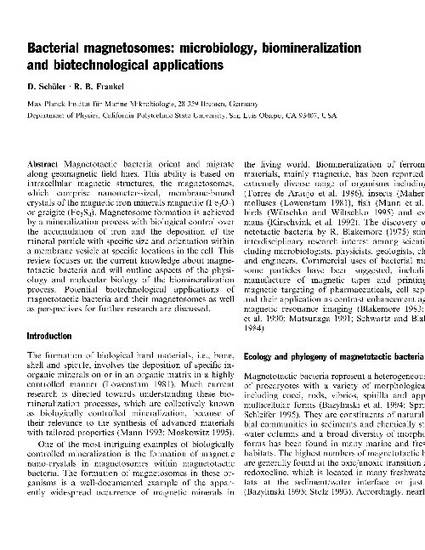
Magnetotactic bacteria orient and migrate along geomagnetic field lines. This ability is based on intracellular magnetic structures, the magnetosomes, which comprise nanometer-sized, membrane-bound crystals of the magnetic iron minerals magnetite (Fe3O4) or greigite (Fe3O4). Magnetosome formation is achieved by a mineralization process with biological control over the accumulation of iron and the deposition of the mineral particle with specific size and orientation within a membrane vesicle at specific locations in the cell. This review focuses on the current knowledge about magnetotactic bacteria and will outline aspects of the physiology and molecular biology of the biomineralization process. Potential biotechnological applications of magnetotactic bacteria and their magnetosomes as well as perspectives for further research are discussed.
Available at: http://works.bepress.com/rfrankel/92/
